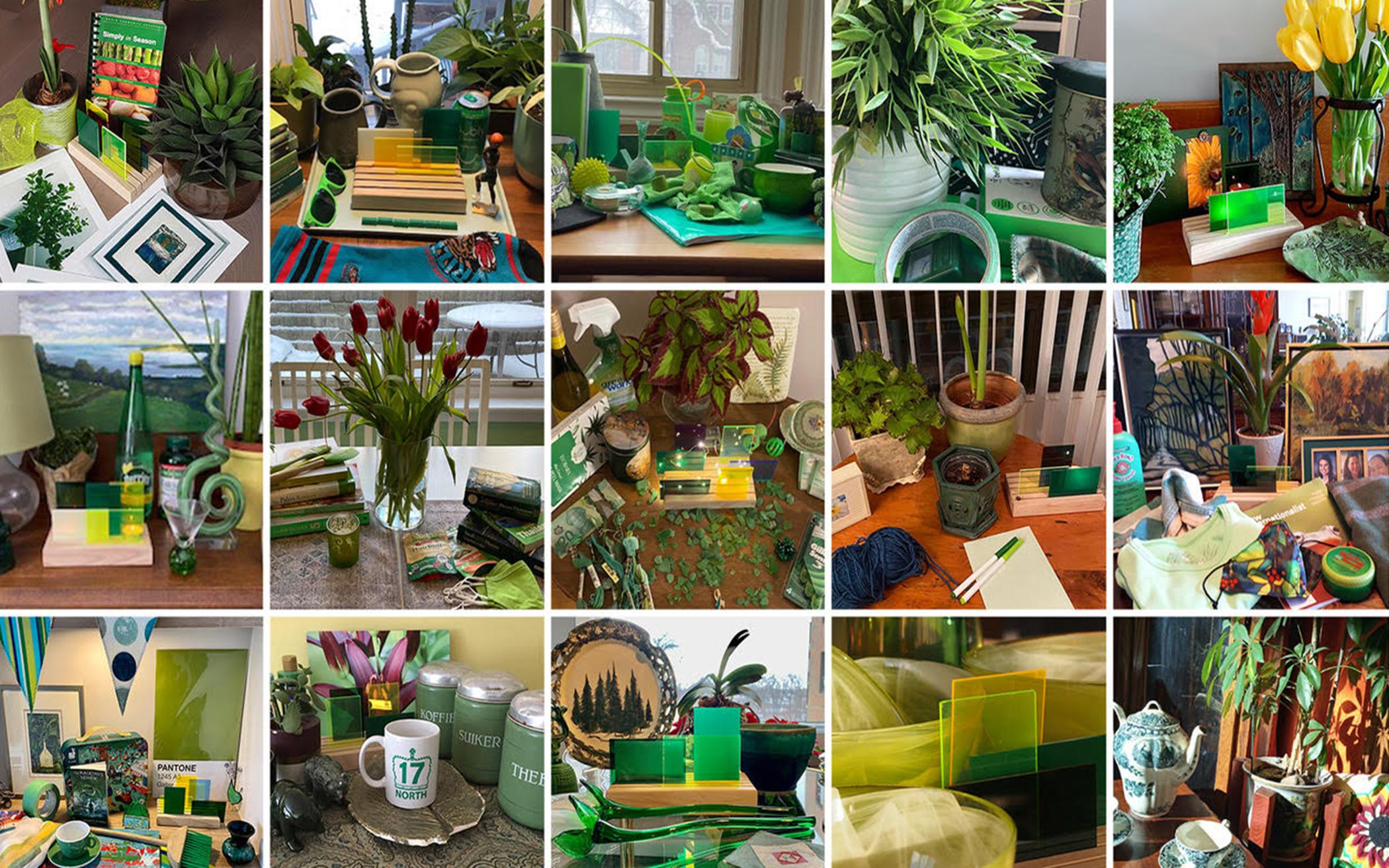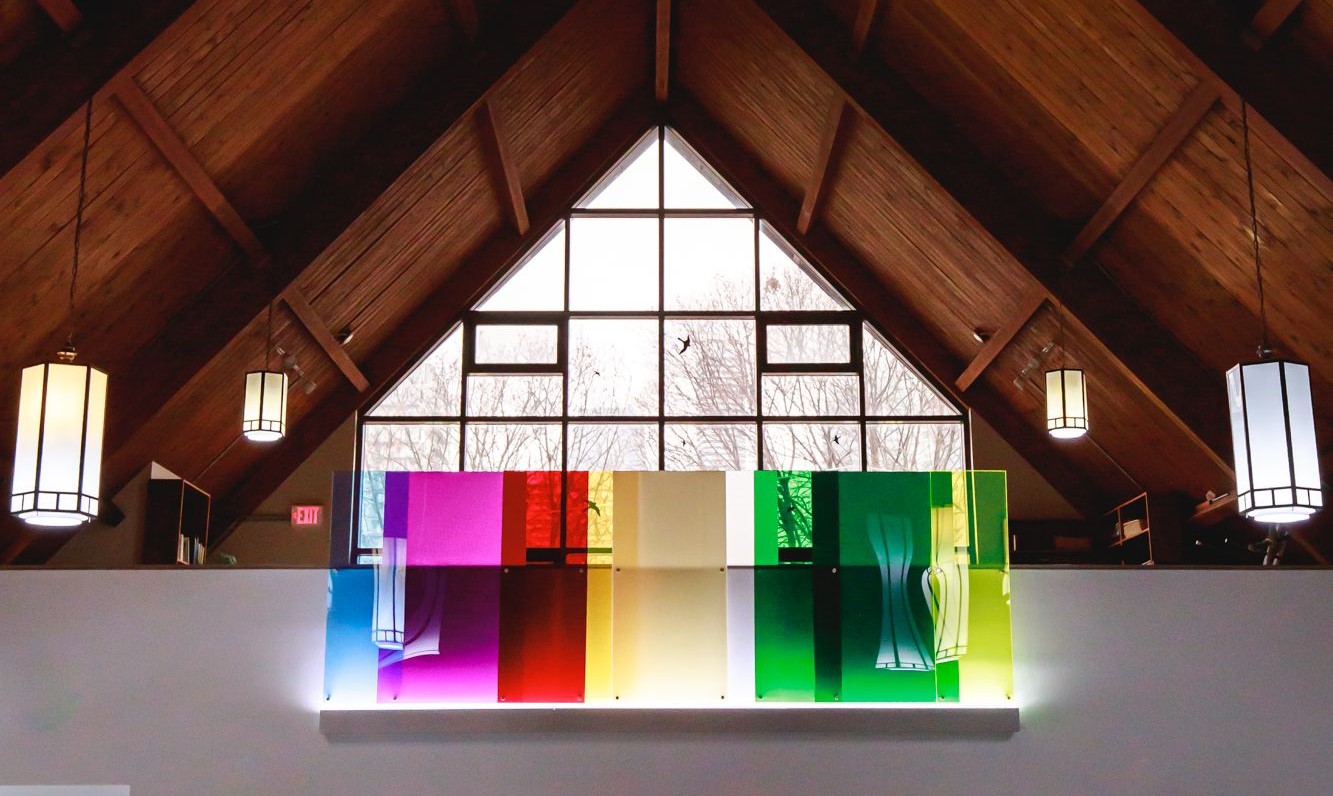Lynnette Postuma is a designer, muralist, and landscape architect in Toronto, Ontario. She is the nursery coordinator and a visuals committee member at First Christian Reformed Church (CRC) of Toronto. Karen Zwart Hielema is an architect and designer who focuses on integrating art and built form. She is a property management committee member at First CRC. In this edited conversation, the two designers talk about why a pandemic-imposed pivot during their Vital Worship Grant turned out to be a blessing.
How would you describe your congregation's demographics?
LP: Ours is a Sunday-focused church. There aren't necessarily a lot of church activities during the week because people live on all sides of the city and it's not always easy to get around. Many members are professionals who need rest in busy lives. We see Sunday morning worship as a time to rest and reflect, followed by coffee together.
KZH: We often speak of our congregation as "small but mighty." Before the COVID-19 pandemic, we averaged about 80 to 100 people of all ages in worship. We also have committees for communication, worship, church property, refugee resettlement, caring for the earth, visuals, shelter ministry, and more. Our pastor, Thyra VanKeeken, hosts book clubs. So you can connect as much as you want to.
What was First CRC of Toronto's previous experience with the liturgical calendar?
KZH: The liturgical year begins at Advent (purple/blue) with Christmas and Epiphany (white/gold), then to Ordinary Time (green), followed by Lent (purple/black), Easter (white/gold), and Pentecost (red), then back to a lengthy season of Ordinary Time (green). [Some liturgical traditions stretch out Epiphany until Lent rather than observing a short first season of Ordinary Time.] Since the 1990s our children's worship program has introduced liturgical colours associated with the church liturgical year. The visuals committee has also incorporated liturgical colours in changing draping, banners, artwork, and other visual elements within the sanctuary to enhance our worship. But we never deliberately spelled it out.
LP: In our initial liturgical study before applying for the grant, two colour groupings emerged that align with what might be considered "seasons of being." One is passive growth during Ordinary Time (green) blended with sustained seasons of joy and celebration for Christmas and Easter (white/gold). The second is smaller bursts of active preparation and intense anticipation during Advent, Lent, and Pentecost (purple/blue/red). Further, the concept of "seasons of being" can connect to one’s own life when we as individuals experience times of waiting, longing, and arrival.
How did you envision specific parts of your grant project deepening liturgical-year understanding?
KZH: We originally planned to offer in-person learning events on how Catholic and Protestant traditions have used liturgical colours throughout history, what those colours mean, and how colour can express emotion and ideas. We'd use that learning to invite people into the biblical story and experiment as a group with the material for a permanent artwork for worship.
LP: We hoped that the Seasons of Being project would deepen our understanding of the liturgical year, particularly how one moment in time (or any given Sunday) is connected to the bigger story of God’s message of love as understood through the Bible.
Did the project express or enhance anything particular about your congregation?
LP: Years ago our congregation worked together to define how we see ourselves and why our church community is important. We came up with a church vision statement of faith and action distilled into a three-word motto: discern, rest, connect. We hoped that Seasons of Being would help people see the church liturgical year as a rhythm of active participation, such as during Advent and Lent, followed by Ordinary seasons, which may seem more passive—but that resting provides spaces to learn and grow.
KZH: The "discern, rest, connect" motto certainly informed our grant process. As we developed the learning journey together with our group facilitator, Jeanette Romkema, we worked to create times of information dissemination, learning, and discernment together. This was followed by periods of rest where people could experiment and play with their Seasons of Being home kits on their own.
What pivot did the COVID-19 pandemic force upon you?
LP: In March 2020, pandemic restrictions prevented our congregation from worshiping in the church building. Since then our worship has sometimes been only online and at other times a hybrid of mostly online with in-person attendance for rotating wards.
KZH: So we pivoted to online learning. We produced and delivered Seasons of Being home kits to all congregation members in fall 2020. The kits include a set of ten plexiglass tiles in the colours of the liturgical seasons and a base of reclaimed wood cut with grooves to hold tiles. Some members asked for extra kits to share with their friends or relatives. Most of our congregation enthusiastically embraced and used the kits. We have continued to use them for virtual worship by encouraging members to rearrange the tile colours with each changing liturgical season.
People were asked to connect together via our group Zoom meets or by submitting photos to share their kit arrangements, where they had placed them in their homes, and how they had incorporated them into their home worship and daily lives. It is comforting to know that the church both in our denomination and worldwide takes many forms and worships in different ways, yet we are all connected to the story of Jesus and the shared liturgical seasons. It also expresses who we are: people living in a diverse urban environment—a colourful group who seeks to support and connect with one another.
How did the at-home kits help people make visual connections with the Christian faith and your congregation?
LP: We created an opportunity for weekly sharing in the church bulletin about how individuals and groups were learning and experimenting with the kit. People reported things such as:
- "The kits encourage creativity and playfulness."
- "Once you start playing with colour as an expression of worship, theme, and ideas, a world opens up."
- "colours can help move me/us to places beyond words/thoughts/feelings and make connections beyond the limits of the more dominant aspects of 'traditional' worship."
- "Though I 'knew' that creativity is a vital dimension in our lives, these kits brought out how infinite and diverse it can be. Now everyone can play with light and colour at home."
KZH: Our pastor commented that using these kits in our homes is an act of unity. It helped unite us as we worshiped from home, even for those who have moved to a new city or those who rarely attend. Now that rotating wards are meeting in person in the church, the permanent balcony installation provides a visual connection between our church, homes, and lives.
With so many issues competing for people's attention, how did you create continuing interest in the at-home kits?
KZH: We learned throughout the process that the periods of rest were really important for letting people settle into and explore new ideas around visuals and worship, for allowing for other topics and concerns to have space, and for being open to new ideas or specific requests. The worship committee asked for something to give people at Easter to go along with the at-home kits. We came up with the idea of a cross cutout. You could change the colour to Lent (purple), white, or frosted.
LP: We also kept the project fresh by doing a fifteen-minute challenge where we asked people to add found objects to their display. We asked them to take photos during Ordinary Time and upload them. We used those photos during mini-reflections in our worship service sharing times. It was a great way for people to see into each other's homes and learn about general principles of working with transparency and opacity, form and function.

Did the grant project produce any worship changes?
KZH: We have found new ways to incorporate colour as a visual cue in our worship and activities. Our weekly bulletin now includes a few sentences about the current liturgical season highlighted by the corresponding liturgical season colour. Our smartphone app The Bridge also carries seasonal images and colours. I think people have a better understanding of how to engage your visual senses to enhance and deepen your worship experience through making and experiencing, contemplating, and appreciating colour and visual elements. We hope children and youth will create related art objects for display. We're thinking of making a smaller Seasons of Being altarpiece.
LP: For the first time ever, the worship committee has begun a liturgical master plan for the year. People who represent different parts of worship will make these plans together with the worship committee. We have discussed with them how to incorporate liturgical seasons into sermon themes and liturgical colours into overhead projection of our liturgies and worship services.
How might other worshiping communities duplicate your Seasons of Being at-home kits?
KZH: We've explained how to duplicate the at-home kits, including less expensive options, in a Reformed Worship (RW) article. It would be easy for a church to use the same idea to recreate the Seasons of Being kits or even an installation as an altarpiece. You could combine elements you already have or buy from a dollar store. For example, you might use rigid foam for the base instead of wood, or coloured tissue paper sandwiched between clear transparency sheets instead of plexiglass for the panels. The RW article also explains steps to create a congregational learning journey around liturgical colours.
Did your congregation develop a permanent artwork despite the pandemic?
KZH: Yes. After a year of Jeanette Romkema facilitating learning together with our community, Lynnette and I conceived of a final artwork that illustrates all the seasons of the liturgical year. It is a 6-foot-by-17-foot installation of coloured Plexiglas panels and integrated LED lighting, mounted on the rear wall of the sanctuary. During worship the lighting can be used to emphasize colour groupings for the current Sunday. Besides enhancing learning about colour and the liturgical year, it marks a pivotal time of worshiping in a different way during the pandemic.

Joanne Schwindt Photography.
LEARN MORE
Explore First Christian Reformed Church of Toronto's Seasons of Being installation and at-home kits through its grant poster, introductory pamphlet, and articles in The Banner and Reformed Worship. You can also reach Lynnette Postuma and Karen Zwart Hielema by emailing their church.

